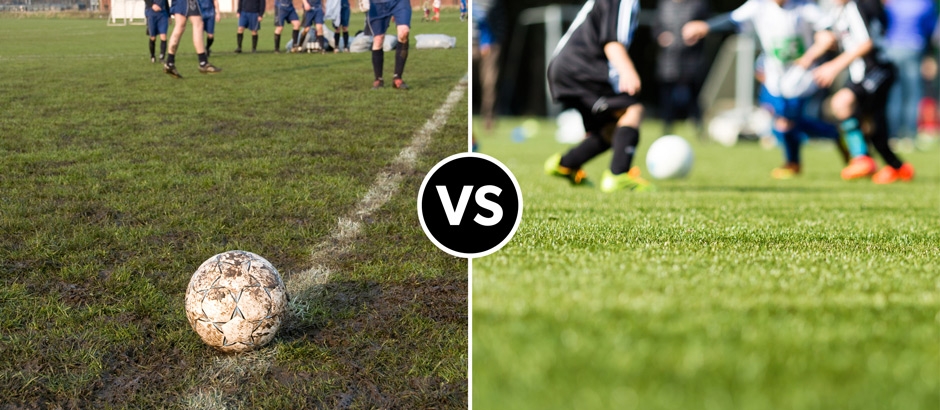3 Important Reasons to Choose Synthetic Turf Over Natural Grass
Posted July 2, 2021
A new athletic field is a major investment, which garners a high level of interest and research. When making this type of investment, you want to make sure you are getting the best dollar value and the best field available on the market. Fortunately, the easy part of the decision is recognizing the superiority of synthetic vs. natural grass. As a result, many athletic fields across the country are being converted from natural grass to synthetic — and for good reason!
At A-Turf, we strongly believe in synthetic turf systems for many reasons, but we recognize that there are 3 main reasons to choose synthetic over natural grass: weather, use, and maintenance.
Weather or Not
With a synthetic turf field system, you are no longer at the mercy of Mother Nature. Gone are the days when players, coaches, and athletic directors obsess over watching the weather channel. Instead they can focus on the sport, not threatening weather. Synthetic fields are known for their outstanding playability even after or during the most extreme weather conditions — including heavy rain and snowstorms — while even the best-cared-for natural grass surfaces can be ruined by just one bad weather pattern at the wrong time. On a natural field, if it rains heavily on a Wednesday or Thursday, a Friday night game might have to be played on a horrible surface or postponed altogether.
Unlimited Use
Natural grass needs time to rest and regrow in-between play. Turf systems can be used all day, every day — so everyone has time to play! In fact, many schools due to land or budget limitations opt for a synthetic multi-sport field so that a single field can be used for any combination of football, soccer, field hockey, lacrosse, baseball, softball, marching band, and more. Learn more about multi-sport fields in this blog.
Maintenance
Synthetic fields can be used with very minimal maintenance, while natural grass fields must be continually monitored and maintained. To keep a natural field in excellent condition, the maintenance costs can be substantial — from mowing services and additional infill to fertilizers and sprinkler systems. And after all that, the hours of use are not even comparable to a synthetic field.
Even after providing examples of the advantages of synthetic turf over natural grass, many will point to the initial cost of a synthetic field as a barrier. But the fact is, when the initial investment is spread over the expected life of a synthetic surfacing system — estimated at 14+ years on A-Turf fields — the rationale for the investment becomes clear. To learn more about our turf options, the investment, and the overall benefits of switching to turf, contact us — we would love to talk to you!
Back to News & Blog »









